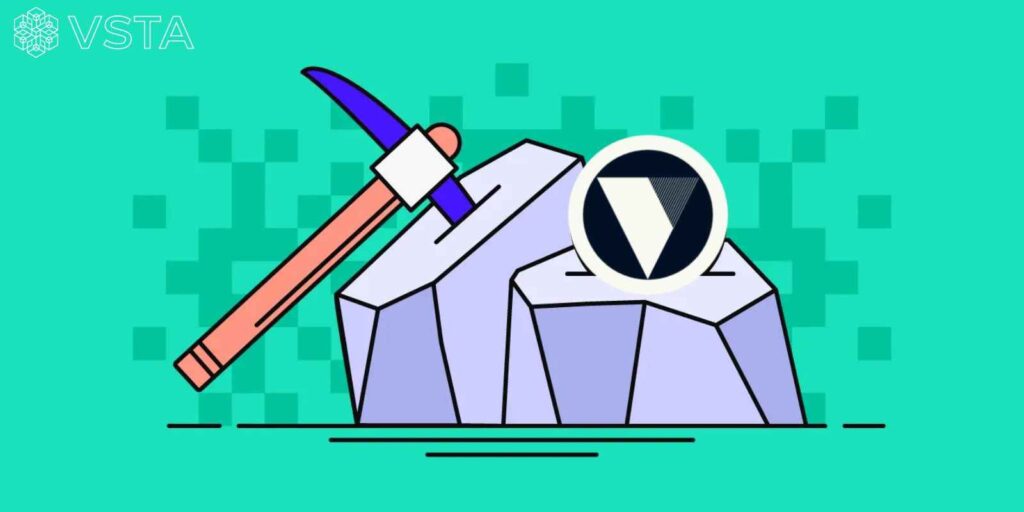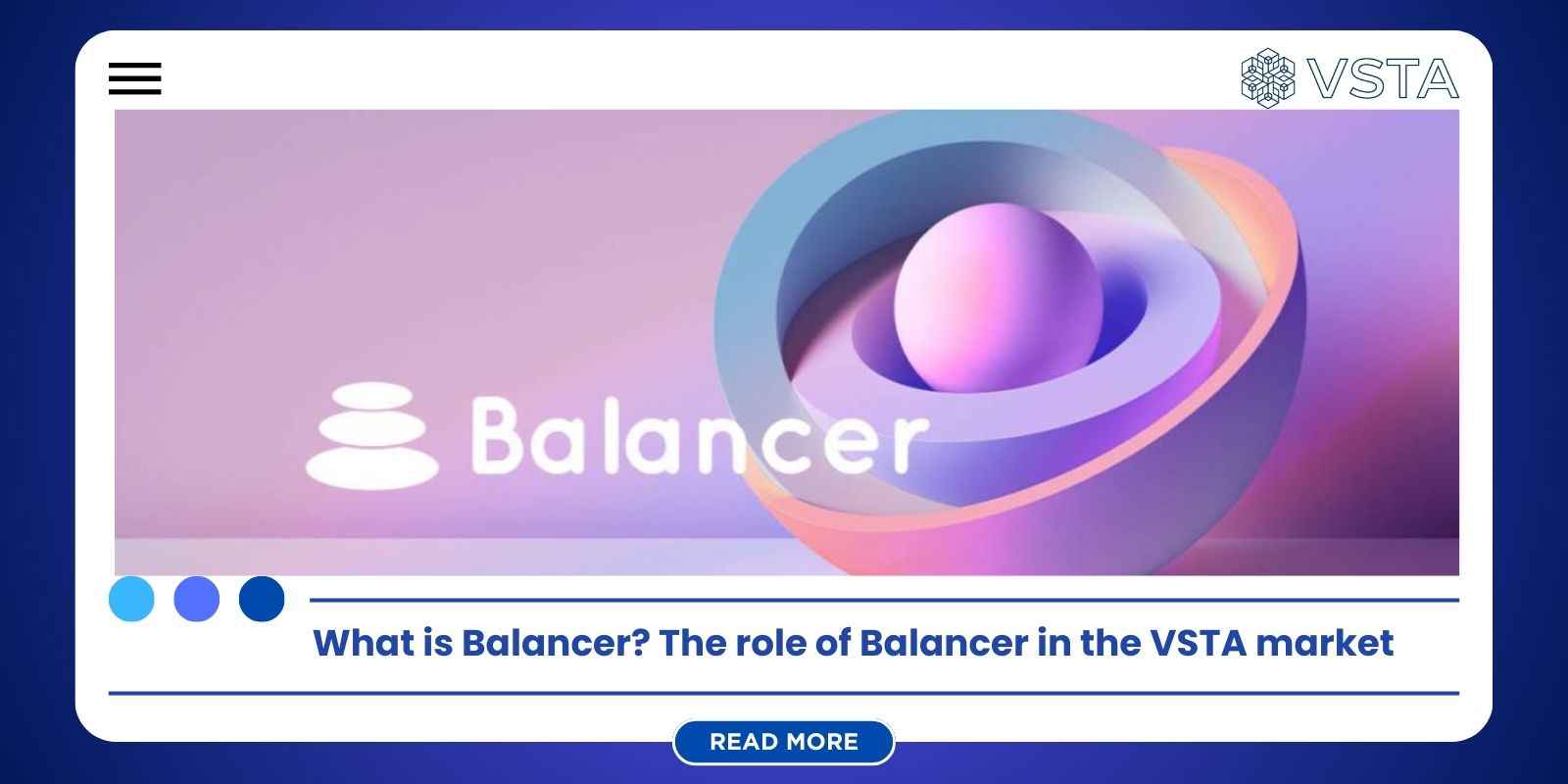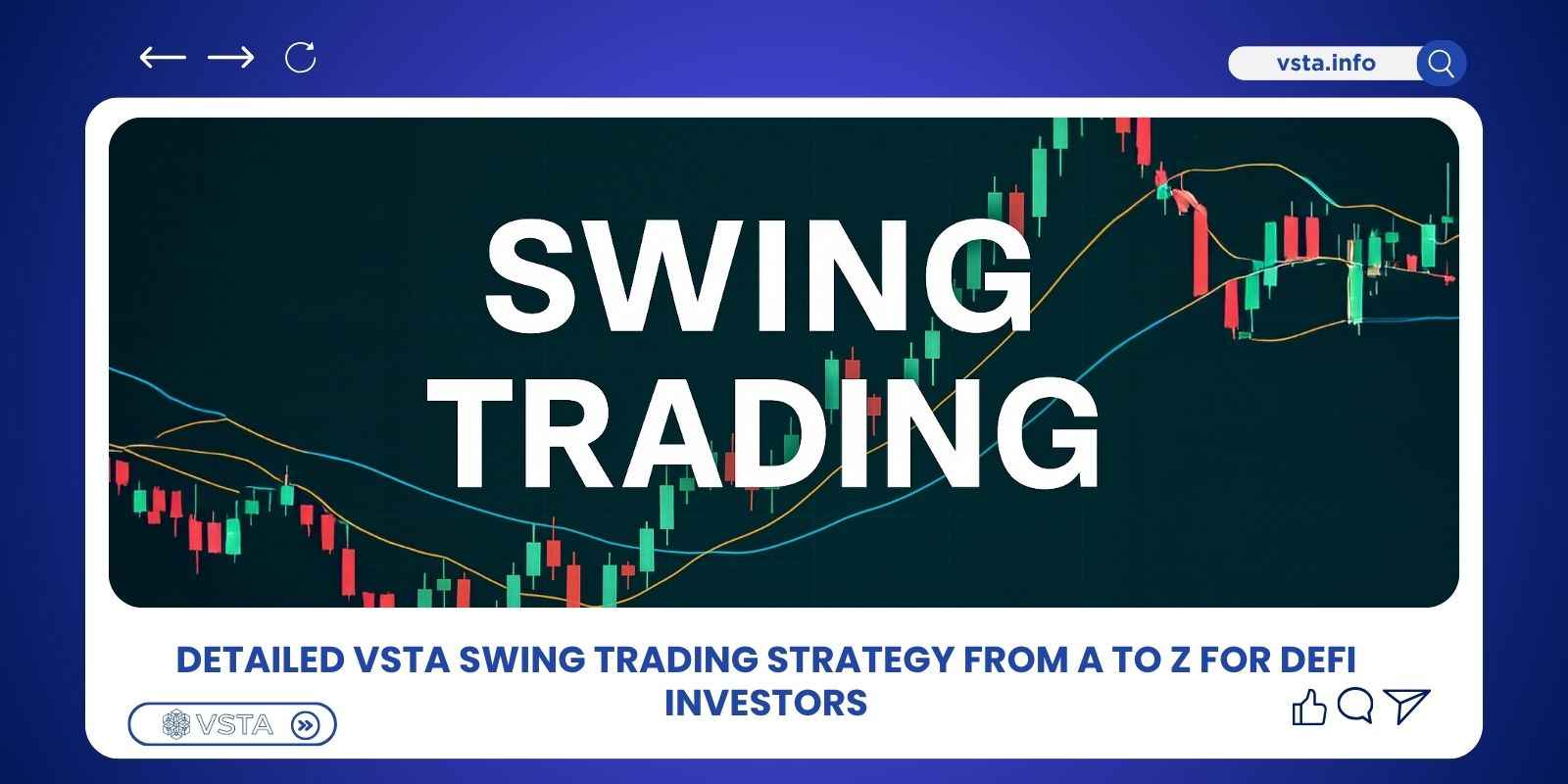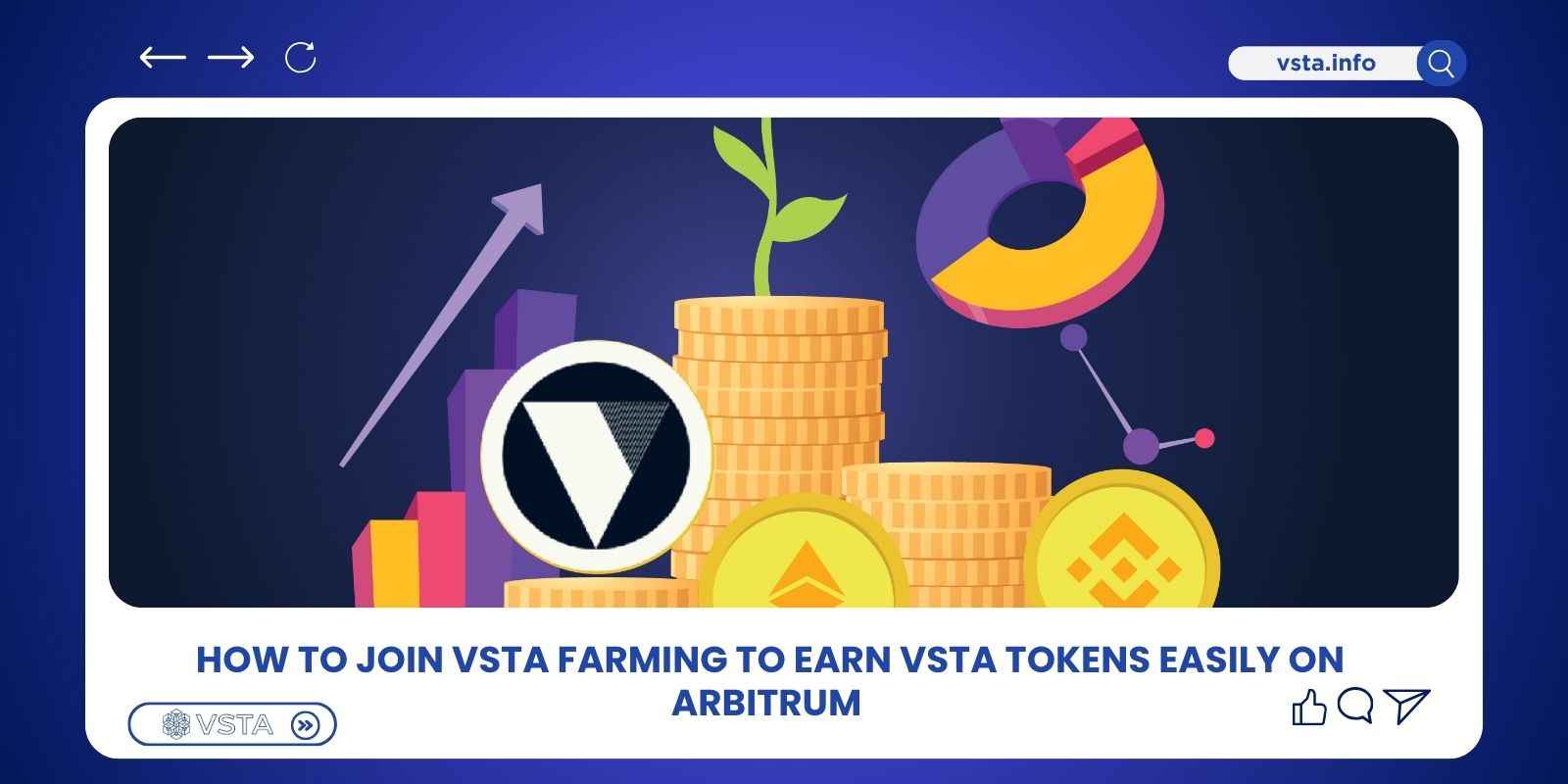To provide liquidity on Vesta Finance (VSTA), you first need to understand what is Balancer. It is considered a decentralized exchange (DEX) that operates on the Automated Market Maker (AMM) mechanism. Similar to Uniswap, Balancer is more flexible as it allows the creation of pools with multiple assets and varying ratios. For a more detailed understanding of Balancer, check out the following article from VSTA!
General Information about Balancer
To quickly answer the question of what is Balancer and how it works within Vesta Finance (VSTA), let’s dive into the details below.
What is Balancer?
So, what is Balancer? In short, Balancer is understood as a community-driven protocol and an automated portfolio manager for liquidity providers. At the same time, it serves as a price oracle that enables decentralized exchange and automatic portfolio management of tokens on the blockchain or within its respective ecosystem.
In addition, Balancer Pools contain two or more tokens that traders can swap between. Liquidity providers must deposit their tokens into these pools to earn swap fees. Balancer also offers powerful features to reduce gas costs and apply highly efficient fee structures. Notably, it unlocks arbitrage opportunities with zero initial token capital and paves the way for customizable Automated Market Makers (AMMs).
What is Balancer in Vesta Finance (VSTA)?
Balancer in Vesta Finance (VSTA) is a decentralized exchange (DEX) that operates on the Automated Market Maker (AMM) mechanism. This enables users to create and participate in different types of liquidity pools with flexible token ratios. Within the Vesta Finance ecosystem, Balancer plays a key role in maintaining liquidity (VSTA liquidity) for the VST stablecoin.
Users can join pools such as VST/ETH or VST/USDC on Balancer to become liquidity providers (LPs). Providing liquidity not only helps VST maintain price stability and smooth swaps, but also gives participants the opportunity to earn VSTA tokens through liquidity mining. With Balancer, the VST stablecoin is able to compete with other well-known stablecoins like DAI and USDC, while expanding its utility across the broader DeFi ecosystem on Arbitrum.

The Role of Balancer in VSTA
In Vesta Finance (VSTA), Balancer plays an extremely important role in liquidity. Details are as follows:
For Users
When exploring what is Balancer, it becomes clear that it is not only a DEX AMM but also a tool that helps Vesta Finance maintain liquidity for the VST stablecoin. With the support of Balancer in VSTA, users can easily swap VST with ETH/USDC quickly. This minimizes slippage during transactions — a crucial benefit in DeFi.
In addition, Balancer helps borrowers reduce the risk of liquidation. When the price of ETH or other collateral assets fluctuates, VSTA liquidity on Balancer ensures that VST remains stable. This process provides users with greater confidence when minting or redeeming VST without worrying about unexpected collateral losses.
For the Project
For the project, integrating Balancer into VSTA is a strategic move to strengthen the position of the VST stablecoin. With strong liquidity, VST can directly compete with popular stablecoins like DAI and USDC. This serves as a foundation for Vesta Finance to build community trust and secure its place in the DeFi market.
Moreover, Balancer also plays a key role in attracting more liquidity providers (LPs). Users who provide liquidity to pools are rewarded with VSTA tokens, creating long-term incentives to stay engaged. This mechanism not only increases TVL (Total Value Locked) but also ensures that Vesta Finance’s liquidity becomes more sustainable while differentiating it from other stablecoin projects.

VST Liquidity Pools on Balancer
Balancer enables users within the Vesta Finance (VSTA) ecosystem to access liquidity pool features. Below are the key details of this standout functionality.
Main Pools (VST/ETH and VST/USDC)
When exploring what is Balancer in the Vesta Finance ecosystem, one of the most notable aspects is the establishment of VST liquidity pools to maintain strong liquidity. Currently, the two most important pools on Balancer VSTA are VST/ETH and VST/USDC.
These are considered strategic trading pairs because both ETH and USDC have strong liquidity. This ensures that the VST stablecoin can be easily swapped into other popular assets without significant slippage. As a result, VST gains a solid foundation to compete not only on Arbitrum but also across the broader DeFi market.
How to Provide Liquidity
To participate in VSTA liquidity, users first need to understand what is Balancer and how it works. Specifically, by depositing VST together with ETH or USDC into pools on Balancer, users can become liquidity providers (LPs).
As LPs, they own a share of the pool and earn transaction fees from swaps. At the same time, they receive rewards in VSTA tokens through the liquidity mining mechanism. This approach not only supports the ecosystem but also provides LPs with passive income opportunities.
Ecosystem Benefits
The development of VST liquidity pools on Balancer brings significant benefits to both users and the project. On one hand, it enhances liquidity for the VST stablecoin, ensuring stable and fast transactions.
On the other hand, strong liquidity allows VST to compete with major stablecoins such as DAI and USDC. This is what sets Vesta Finance apart from other DeFi projects, as Balancer VSTA enables the ecosystem to expand its community. Most importantly, it attracts more LPs and builds long-term trust in the market.

Liquidity Mining and VSTA Rewards on Balancer
Liquidity Mining Mechanism
When exploring what is Balancer within the Vesta Finance ecosystem, one of the most important aspects is the liquidity mining mechanism. Users can provide liquidity to the VST/ETH or VST/USDC pools on Balancer to become liquidity providers (LPs). In return, LPs receive transaction fees from swaps along with additional rewards in VSTA tokens. This mechanism not only incentivizes community participation but also helps maintain stable and sustainable VSTA liquidity.
Encouraging Community Participation
Understanding what is Balancer also means understanding how Vesta Finance incentivizes the community to contribute liquidity. The more LPs participate, the higher the project’s TVL (Total Value Locked), which strengthens VSTA’s position. This ensures that the VST stablecoin maintains abundant liquidity, minimizes slippage risks, and enhances its competitiveness against top stablecoins like DAI and USDC.
Furthermore, VSTA token rewards for LPs provide not only economic benefits but also reinforce community trust in Balancer VSTA. As a result, the Vesta Finance ecosystem continues to expand and solidify its standing in the DeFi market.

4 Risks to Avoid When Providing Liquidity for VST on Balancer
When learning what is Balancer and deciding to provide liquidity for VST/ETH or VST/USDC, investors should be aware of the following potential risks:
- Impermanent Loss: This is the most common risk when joining VST liquidity pools on Balancer. If the price of ETH or USDC fluctuates sharply compared to VST, the value of an LP’s capital may end up lower than simply holding the assets individually.
- Crypto Market Volatility: Although the VST stablecoin is designed for stability, ETH and USDC in the pools may still experience significant volatility. This directly impacts the value of assets within the pool.
- Smart Contract Risks: While Balancer has been audited, any DeFi protocol carries the risk of technical vulnerabilities or potential attacks. Therefore, understanding what is Balancer and being aware of its security mechanisms is essential before participating.
- Personal Risk Management: Investors should avoid allocating all their assets into Balancer VSTA. Instead, capital should be diversified wisely. It is also important to monitor TVL, rewards, and market movements regularly to adjust strategies in a timely manner.
Conclusion
The above provides key insights into “what is Balancer” and the role of Balancer in the VSTA ecosystem. Hopefully, this information helps you better understand how Balancer works and operates. If you need further clarification after reading, don’t hesitate to contact us. VSTA is always ready to provide additional guidance for accurate investment strategies.



